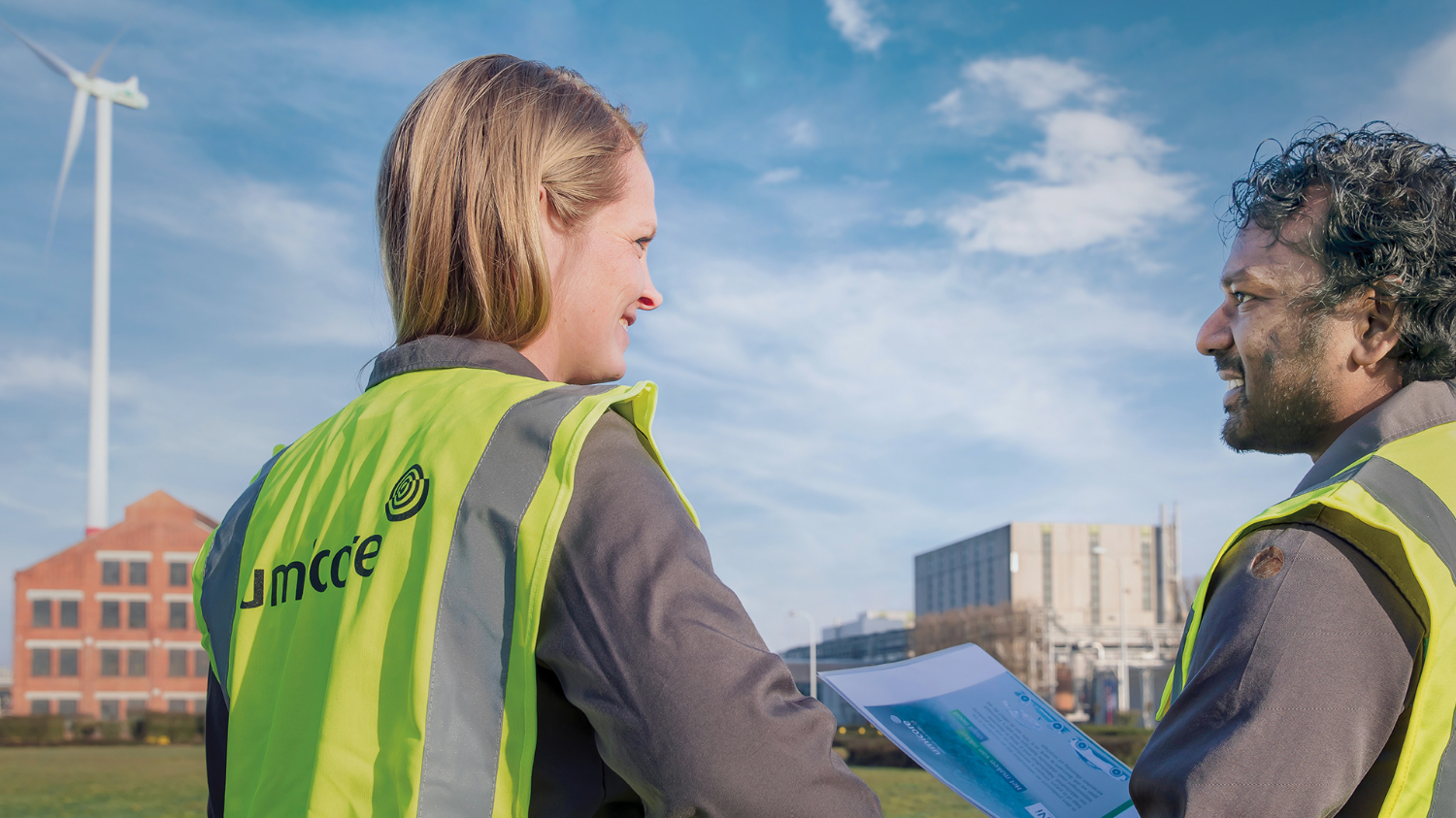
Environment
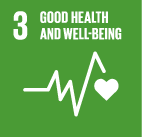
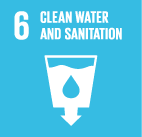
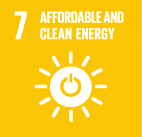
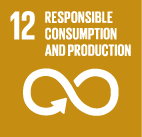
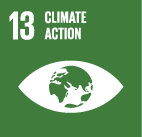
Minimizing impact on climate and the environment
Minimizing the impact of our operations on climate and the environment are key elements of our sustainability strategy.
The Umicore Way and our mission of Materials for a Better Life drive our commitment to sustainability. As a materials technology company, we aim to increase the efficient use of metals, energy and other inputs in our operations to balance environmental and economic factors and work to increase closed-loop relationships with our customers. Our success is measured in our ability to make sustainability a competitive advantage.
Minimizing the environmental impact of our operations is an integral part of our Zero Harm ambition. Building on significant achievements tied to state-of-the-art operations in terms of intensity and environmental impact, Umicore continues to maximize the efficient use of resources and minimize emissions to air and water. Umicore is committed to reducing diffuse metal emissions by 25% by 2025 compared with 2020 and implementing water stewardship in 100% of our operations. Read more about our first findings in terms of biodiversity here.

Sustainability at the heart of new strategy
Being a sustainability champion is at the heart of our new 2030 RISE Strategy, launched in June 2022. In practice, this means we are minimizing the impact of our operations and maximizing our positive effect on society, supporting the journey to decarbonization.
As the backbone of our climate action plan, our Let’s Go for Zero ambition establishes our targets and milestones to reach our goals. We are committed to carbon neutrality for Scopes 1 and 2 greenhouse gas emissions (GHGs) by 2035, with different milestones along the way and using 2019 as the baseline. In addition to our net zero targets, we are committed to running all our European operations on renewable energy by 2025.
Reducing GHGs
To have a meaningful impact on climate change we need to ensure the sustainability of our value chain. Umicore is therefore working with suppliers to reduce Scope 3 GHGs. In 2022, Umicore announced its ambitious target to reduce the carbon intensity of purchased materials by 42% by 2030. To achieve this ambition, we will not increase the Scope 3 emissions of our raw materials, despite the exponential growth projected in our 2030 RISE Strategy. Umicore’s 2030 targets for Scopes 1, 2 and 3 arevalidated by the Science-Based Target initiative (SBTi), confirming their alignment with climate science.
Umicore supports the Taskforce on Climate related Financial Disclosures (TCFD) and joined the Belgian Alliance for Climate Action (BACA).
Resource efficiency
%
The ambition to address increasing global resource scarcity and achieve material efficiency is an important factor in our strategy. Umicore is a world leader in the eco-efficient recycling and refining of precious, special, secondary and base metals-bearing materials. Our eco-efficient process entails maximizing the physical recycling of materials while minimizing the associated environmental burden. We recover and sell these metals and our closed-loop business model maximizes the re-use of materials.

In 2022, 55% of the materials were from secondary origin and 45% were of primary origin stable compared with previous year’s data. In 2022, post-consumer raw materials represented approximately 45% of total secondary raw materials for the Group. Over time, factors impacting secondary materials availability for Umicore’s input mix could be the rapid growth in demand for clean-mobility materials, linked to society’s shift to decarbonization, combined with long lead times between bringing material to the market and having material available for recycling.
Waste
tons
Umicore’s commitment to resource efficiency is at the heart of our closed-loop business model. We maximize the use and reuse of the materials in our flows. (See 2030 RISE Strategy section for more information). Similarly, we monitor and seek to minimize the waste generated by our operations.
In 2022, a total of 104,337 tons of waste were generated compared with 94,619 tons in 2021, an increase of 10%. While total volume of non-hazardous waste reduced by 13% from 21,065 tons in 2021 to 18,363 tons in 2022, the recycling rate of non-hazardous waste remained stable with 69% in 2022 compared with 71% in 2021. Mainly due to the disposal of stockpiled amounts, the total volume of hazardous waste increased by 17% from 73,554 tons in 2021 to 85,974 tons in 2022, while the recycling rate of hazardous waste remained relatively stable with 7% in 2022 compared with 8% in 2021.
Water
megaliters

In 2022 Umicore set out to define its water stewardship program as part of the Zero Harm pillar of the Let’s Go for Zero ambitions. Water use at Umicore is key to our processes and operations. Like metals, water can be infinitely reusable and renewable if treated with care. Our climate action plan includes treating climate- and water-related disasters, while a key piece of our Zero Harm ambition is to minimize our impact on water as a resource. In this context, we have therefore defined a Umicore water stewardship program. Within this program Umicore will launch, in 2023, a risk-based approach to address the relevant water issues at all operational sites, starting off by developing contextual water action plans for the Olen and Hoboken sites. From our assessment these sites proved to be the most significant from a double materiality perspective.
In terms of data collection Umicore adopted the GRI definitions and has actions in place to arrive at audit-quality data calculations and build further on the existing processes to improve insight in water data.
Total water withdrawal in 2022 amounted to 9,616 megaliters while total freshwater withdrawal was 9,405 megaliters, which represents a slight decrease compared with 2021. Distribution of water withdrawal remained almost stable across the business groups compared with 2021. Based on the group assessment for water, using WRI Aqueduct, it was identified that several sites withdraw water from water stressed areas. At Group level the water withdrawal from water stressed areas was 5,380 megaliters while freshwater withdrawal from water stressed areas was 5,345 megaliters. In comparison with 2021 these volumes are stable. The total water discharge for the group was 8,094 megaliters in 2022 of which 1,906 megaliters represents discharge of freshwater. The freshwater consumption for the Group amounted to 7,499 megaliters.
Emissions
Tons
Impact units
Impact units
% impact of the 2020 baseline
Umicore has been systematically tracking metal emissions to water and air from point sources since 2011. Ambitious reduction targets have been achieved since then, and we strive continuously to reduce the impact that our metals emissions have on the environment. We focus on emissions that are relevant to the environment in terms of impact and that are affected by the metals present in Umicore’s material flow. We monitor and take steps to reduce the impact of emissions on the environment – to air, water and on the soil.
Different metals each have different and specific potential toxicity levels for the environment and human health. For this reason, we focus on reducing the impact of our emissions by applying an impact factor. In 2021, we reviewed the scientific basis behind this approach and revised the impact factor of several metals. This revision has been applied to emissions values from 2018 onwards.
The SOx emissions for the Group slightly increased by 2% from 372 tons in 2021 to 378 tons in 2022. The NOx emissions also show a slight increase by 3%, with 247 tons in 2022 compared with 240 tons in 2021.

Metal emissions to air in 2022 were 83,111 impact units, up by 19% from 70,084 in 2021. The corresponding loads of metals to air increased by 22% year-on-year, from 994 kg in 2021 to 1,214 kg in 2022. The increase can be attributed to increased activities in the Energy & Surface Technologies Business Group, leading to an increase in calculated metal load while staying well within the legal emission limits at the sites. The metal emissions at most of the material sites at Umicore actually decreased year-on-year, due to a combination of increased filter efficiency, improved air emissions abatement systems and fewer working hours for certain equipment.

Metal emissions to water in 2022 decreased 15% to 4,012,119 impact units, from 4,714,302 in 2021. This can be mainly attributed to a decreased emission in production activities at the Rechargeable Battery Materials plant in Kokkola. The corresponding load of metals to water for the Group decreased by 15% year-on year, from 908,186 kg in 2021 to 774,306 kg in 2022.
During the reporting year 2022, it was discovered that a material load of emissions to water was omitted from the reporting for the period 2020-21, for a site that was acquired by Umicore in 2019. The loads and metal impact to water have been recalculated for those years accordingly, leading to significant changes to the overall impact for the Group due to regular, significant emissions of a metal with a relatively low impact factor. Umicore has at all times been in compliance with local legislation regarding this discharge.
As opposed to the "guided" emissions described above, from a point source such as a chimney, diffuse emissions originate from a non-point source, such as from dust when handling raw materials. Achieving our Group-wide target of a 25% reduction from the 2020 baseline means defining targets for each site identified as contributing to Umicore’s impact in terms of diffuse metal emissions — namely the site in Hoboken. In 2022, this production site further improved the management of diffuse emissions, bringing its impact down by 45% compared with the site’s 2020 baseline.
Energy
Terajoules
%
%
Umicore has a long history of prioritizing energy and process efficiency across its operations. In the context of our Let’s Go for Zero strategy ambitions, efficiency remains a priority to help us achieve our ambitions of Net Zero Scopes 1+2 GHG emissions by 2035. Energy consumption continues to be monitored and reported on all sites, including for energy efficiency projects. The two largest sites in Belgium have been part of the energy efficiency covenant with the Flemish Government since 2004.
In 2022, 32 sites accounted for more than 95% of the Group’s energy consumption with a total of 46 energy efficiency projects implemented over the course of the year. These projects cover a broad spectrum of improvements such as process optimization, Heating Ventilation & Air Conditioning (HVAC), lighting and insulation. This year, we are sharing two energy efficiency project outcomes.
In our Automotive Catalysts site in Bad Säckingen (Germany), the process team analyzed the frequency drive of the main exhaust fan. Exhaust gases are completely combusted in a burner fueled by natural gas. Optimization in the frequency enables a reduction in natural gas use, leading to an estimated annual energy saving of 2,000 MWh, equivalent to 404 tonnes CO2e saving per year.
At our Rechargeable Battery Material site in Cheonan (South Korea), an annual energy saving of 697 MWh is realized in a HVAC efficiency project, saving 287 tonnes CO2e per year. During the winter season, the temperature in the production area will be controlled by venting hot air via fans, substituting the operation of the air conditioning.
Total energy consumption in 2022 was 7,300 TJ compared with 8,308 TJ in 2021, a decrease of 12%. This decrease in energy consumption can be mainly attributed to a decrease in activity in our Energy & Surface Technology Business Group and reduced energy use in Recycling. In 2022, direct energy consumption was 3,616 TJ, or 50% of the total energy consumption for the Group, and indirect energy consumption for industrial sites and office buildings was 3,685 TJ, or 50% of the total energy consumption for the Group. Umicore’s energy intensity ratio amounted to 1.8 for 2022, down from 2 in 2021.
The total global electricity use was 919,520 MWh, of which 35% was from renewable sources — up from 17% in 2021. In Europe, where a significant share of electricity demand occurs in the Group, the share from renewable sources was 55%. The Group’s target for renewable electricity is a 60% global share and a 100% share in Europe by 2025.
In 2022, Umicore also completed additional on-site renewable electricity installations, including solar installations at our sites in Shirwal (India) and Jiangmen (China). Collectively both projects resulted in 3,066 MWh of renewable electricity.

Greenhouse Gas Emissions
Tons CO2e
Tons CO2e
Tons CO2e
Scope 1 emissions are direct GHG emissions from owned or controlled processes and Scope 2 emissions are indirect GHG emissions from the generation of purchased energy. Total market-based emissions (Scopes 1+2) in 2022 decreased 19% year-on-year to 684,993 tons CO2e, from 846,437 tons CO2e in 2021, with reductions observed in all business groups and year-on-year reductions both on Scope 1 (7%) and Scope 2 (29%).
The decrease in Scope 1 emissions occurs in all business groups. In Hoboken (Belgium), the nitric acid plant became operational in the last quarter of 2022. This installation captures nitrous oxide, a potent GHG emission, converting it into nitric acid. This led to a 20% decrease in nitrous oxide emissions verus 2021, and it will deliver a significant decrease in process emissions in 2023.
Market-based Scope 2 reductions in 2022 are also observed in all business groups. This is largely attributed to changes in electricity grid emission factors (EFs). As of 2022 Umicore applies more strictly the hierarchy for electricity grid EFs as per the Greenhouse Gas Protocol. In decreasing order of preference and where available, we use supplier specific EFs (contracts, certificates), the latest residual mix EFs (national, subnational or regional) and national production EFs.
Total location-based emissions were 707,690 tonnes CO2e. As compared with 2021, the market-based Scopes 1+2 total is lower than the location-based total, attributed to more sites with contracts with exclusively renewable electricity, use of guarantees of origin for renewable electricity and on-site renewable electricity installations. Umicore’s GHG intensity ratio amounted to 165 for 2022, down from 213 in 2021 and 226 in 2020.
Umicore has set a target for Net Zero Greenhouse Gas (GHG) emissions in Scopes 1 and 2 by 2035, with intermediate milestones of a 20% reduction by 2025 and a 50% reduction by 2030. These milestones are set against our 2019 GHG emissions baseline: 791,915 tons CO2e total Scopes 1 and 2 emissions. As compared with the baseline, total market-based emissions in 2022 decreased by 13%.
In 2022, Umicore created a full Scope 3 inventory for 2019 to serve as a baseline for the definition of a Science Based Target initiative (SBTi)-compliant scope 3 target. This baseline year was chosen to align with that used for the scope 1 and 2 target. As 2019 was also the most recent year not impacted by the COVID-19 pandemic, SBTi allowed 2019 in the baseline selection.
Scope 3 emissions for 2019 amount to 8.2 million tons of carbon dioxide equivalent (CO2e), around 10 times the combined amount of scope 1 and 2 emissions for the same year. The largest amount of these emissions, 7.3 million tons, comes from upstream activities, of which the category “purchased goods and services” represents more than 90%.
As part of the Let’s Go for Zero ambitions announced in June 2021, we committed to having our greenhouse gas (GHG) emissions reduction target validated by the SBTi. Considering the absolute value of our Scope 3 emissions; our future growth; and that the materials we buy have the largest impact on our scope 3 footprint, we have defined a carbon intensity target for our purchased goods and services. The target aims to reduce emissions by 42% by 2030, compared with the 2019 baseline.
We have identified different levers to achieve this very ambitious target. The first lever is really making use of our unique and strong closed-loop model. The second is to increase the input of secondary materials in our mix. The third is working together with our suppliers giving preference to those suppliers that either already have a low-carbon footprint or at least a clear roadmap towards one. The fourth and final lever is moving further upstream into refining.
Greenhouse gas emissions linked to purchased goods and services in 2022 have increased to about 7.3 million tons compared with 6.8 millions tons in 2019. This is linked to an increase in the tonnage of the raw materials processed. For more, see the Environmental Statements.
In 2023, we will continue to work with our suppliers on their emissions profile, helping to identify ways in which they can reduce the footprint of the products they deliver to Umicore. Although Umicore’s Scope 3 target focuses on the category 3.1: “Purchased goods and services”, we will also work towards reducing emissions in the other impact categories, with a focus on upstream such as transport-related emissions. See Responsible and sustainable sourcing in our supply chains .
For avoided emissions, also referred to as “Scope 4”, see Sustainable Products & Services and the Environmental Statements.
Regulatory compliance & management system
In 2022, some 45,000 environmental measurements were carried out at all Umicore’s industrial sites, compared to some 58,000 the year before. The ratio for the number of measurements that did not meet the regulatory or permit requirements is very low at 0.25% for the Group, compared to 0.10% in 2021. It should be noted that during the analysis of the 2022 regulatory compliance data uncertainties were encountered with regard to the count of measurements and exceedances at several sites, having an impact on the total count and the compliance excess rate. Therefore, numbers presented here can be seen as indicative only. In 2023, further work will focus on strengthening the reliability of these indicators.
Of the 52 consolidated industrial sites, 50 have put in place an environmental management system certified against ISO 14001. The two remaining sites are acquisitions/new sites that joined Umicore reporting in 2018 and 2021, these sites are planning the implementation of an environmental management system during 2023.
In total, 66 environmental complaints were received in 2022, the large majority of which was related to noise and dust. Seven of the complaints are ongoing.
Managing impact from historical activities
The history of Umicore goes back more than 200 years. It all started with the coming together of several mining and smelting companies, which gradually evolved into the materials technology and recycling company Umicore is today. In the mid-1990s, Umicore began divesting all mining rights remaining from its historical predecessor companies. Mine closures and restitution of concessions to state authorities are consistently carried out in collaboration with the competent authorities and local stakeholders. Remediation projects for smelting and refining installations are developed in close consultation to ensure any risks are reduced to levels acceptable to the authorities.
Umicore’s proactive program for assessing and, where necessary, remediating soil and groundwater contamination is defined in The Umicore Way. The following paragraphs illustrate the progress made in the main ongoing programs during 2022.
Belgium
Our oldest predecessor company, Vieille Montagne, was granted a mining concession by Emperor Napoleon Bonaparte in 1805, with five more concessions added over time, all located in eastern Wallonia. Mining activities ceased in the 1950s, and extensive rehabilitation work was carried out in close consultation with the competent authorities. Four concessions were officially retroceded to the Government, with the remainder ongoing.
Historical non-ferrous metals production in Hoboken, Olen, Balen and Overpelt impacted soil and groundwater on the industrial sites and on neighboring land. In 1997, Umicore concluded a voluntary Covenant with the Flemish Region to deal with this historical contamination, signing an addendum in 2004 with the regional waste authorities (OVAM) and the Flemish Regional Minister of the Environment. We committed to spend € 62 million over 15 years for historical pollution remediation on four sites, including two sites in Balen and Overpelt that were divested by Umicore in 2007 and that now belong to Nyrstar. OVAM and Umicore also joined forces to remediate historic pollution in the 9km-perimeter surrounding the industrial sites, over 10 years, both contributing € 15 million to a remediation fund. In 2014, OVAM and Umicore agreed to extend the program an additional five years. The covenant came to an end in 2019, but the remedial efforts at the Umicore sites will continue as long as is necessary.

Hoboken
In Hoboken, the plant was originally founded as a lead and silver refining operation in 1887. Over the next 135 years the site has grown into one of the largest and most sophisticated refineries and recyclers of metals in the world. Over the years, Umicore has replaced heavily contaminated topsoil and remediated the historical contamination in the adjacent residential area. On the operational site an extensive soil and groundwater remediation is ongoing in order to address existing risks to the environment. During 2022 on site soil remediation proceeded at steady speed, and approximately 25,000 tons of soil has been remediated. The next stage of groundwater remediation aims to further isolate the groundwater at site from the environment. Prior to the start-up of this new groundwater drainage system, and to avoid run-off to the environment, additional monitoring was undertaken in agreement with OVAM. The monitoring evaluated the added value of further extending the groundwater catchment system. Meanwhile the current groundwater remediation efforts are operated successfully. About 6,000 m³ of groundwater has been purified in the on-site wastewater treatment plant. The majority of this water has been re-used at site.
Olen
In Olen, contamination in and around the site results from historical production activities of mainly copper and cobalt. An on-site groundwater remediation program, started in 2007, is ongoing to remove contaminated groundwater and avoid further spreading of the plume. In 2022, the soil remediation proceeded as planned in view of the infrastructure works at site. Approximately 1,000 tons of contaminated soil and buried waste were further excavated during 2022.
Between 1922 and 1980, radium and uranium were produced in Olen, including radium used in experiments by Marie Curie. The radium production plant was demolished during the 1970s and the production waste was confined to a temporary but long-term aboveground storage facility, according to contemporary standards. Umicore continues to monitor on site and takes measures whenever necessary.
However, to ensure a long-term solution to future generations, we are working with the federal and regional agencies for the storage of historical radioactive waste. In 2020, the Federal Agency for Nuclear Control issued guiding principles for the permanent remediation and storage of this legacy radioactive material in a vision note. This was an important step towards addressing once and for all the historical radioactive legacy at the Olen site and a big step towards a sustainable solution. Joint working groups, including government agencies FANC/AFCN, NIRAS/ONDRAF, OVAM and Umicore are setting out the steps towards a complete remediation program for this exceptional legacy. Developing and implementing this detailed roadmap is expected to take several years.
In 2022, the Minister of the Interior provided a legal framework stipulating requirements for the remediation of soil contaminated by radioactive substances. The Council of Ministers approved a preliminary draft law. The legislation brings us one step closer to effective remediation of this radioactive contamination in Olen.
Meanwhile, Umicore continues risk monitoring. Measurements and controls are carried out on a regular basis by FANC/AFCN and Umicore. In each case, the results confirm that there is no danger to humans and the environment.
Brazil
During an environmental assessment following the acquisition in 2003 by Umicore of industrial units in Americana (SP), Guarulhos (SP) and Manaus (AM) in Brazil, pre-existing groundwater pollution was detected at the Guarulhos site. This historical pollution originates from before Umicore’s purchase of the operations. Umicore installed a hydraulic barrier in 2011 to prevent further spreading of this contamination. Targeted extraction systems were put in place on site to speed up the remediation.
In addition, Umicore worked with the local authorities, to relocate residents in the area adjacent to the plant and converted the vacated space into a park in 2016, minimizing the potential exposure of the population. The industrial activities moved to Americana during 2020 and 2021 and the industrial buildings in Guarulhos were closed and partially demolished.
Groundwater remediation is extremely complex and requires a very specific step-by-step approach. It is therefore not exceptional that such projects take 10 or more years. To speed up the process, state-of-the-art remediation techniques (e.g. thermal remediation) were commissioned. Trials of these techniques took place between 2021 and 2022 and are expected to be fully operational in 2023. Studies to further improve and shorten the lead times for remediation projects are ongoing. As always, such studies are carried out in close cooperation with the relevant national and local authorities and regulatory bodies.
France
Umicore’s predecessor companies operated mines in the south of France from the mid-1800s. The last mining activities were terminated by the early 1970s and extensive rehabilitation work was carried out during the 1990s. All former mining concessions in France have now been retroceded to the French Government.
Zinc mining in Saint-Félix-de-Pallières began in the 19th century. The concession was closed in 1971 in full compliance with legislation and was waived in 2004 by the French authorities. Umicore regularly monitors a landfill containing flotation residues, which remains Umicore’s property. To guarantee its long-term safety and stability, Umicore carried out and completed extensive refurbishment work in 2021 and 2022, including remodeling the land surface; installing engineered stability layers; planting vegetation; and improving the drainage system, all of this in close contact and under the supervision of the relevant authorities. In 2019, the French State issued four injunctions for Umicore to implement further remediation measures. These injunctions were later annuled in 2020 on the grounds that Umicore complied with all its obligations at the time of termination of its operations. The cases are now on appeal. A decision by the Administrative Court of Appeal is expected in 2023. These injunctions relate to different sites of the former mining operations, the main one being the landfill on which Umicore in the meantime completed the relevant remediation operations.
In Viviez, pollution in and around the site results from historical zinc refining activities that started in 1855 and stopped towards the end of the last century. Umicore invested € 40 million in a large-scale remediation program from 2011 to the end of 2016 and has transferred post-remedial obligations to a third party. Together with other partners, Umicore joined a voluntary program in 2017 to address soil contamination in private gardens around the Viviez site. Data was collected between 2017 and 2018 and measures were defined by a dedicated expert panel established by the competent authorities. During the last two years, Umicore has prepared extensively for execution of the work in consultation with relevant stakeholders, including developing a detailed roadmap and planning schedule. The project is scheduled to start during the first half of 2023 and estimated to finish during the course of 2024. This project is carried out on a voluntary basis.
United States
In 1980, Umicore’s predecessor company acquired an abandoned silver-gold mine at Platoro in a nature recreation area in the Rocky Mountains in Colorado. Subsequent exploration was unsuccessful and further exploitation of the mine was stopped.

In the 1990s a water treatment plant was installed, which was replaced by a new modern facility in 2018 with a view to further decreasing metal concentration in the discharge and the volume of solid waste. A proposal received by Umicore/Union Gold in 2019 for a new effluent permit to be attained in 2024 was immediately contested by Union Gold, who argued against the technical feasibility of the very stringent limits for arsenic included within. The competent authorities accepted these arguments and recommended applying for a less stringent permit. Meanwhile, Union Gold tested additional treatment steps in the wastewater treatment plant. Water drainage is highly dependent on natural weather conditions, dealing with snowfall in winter and the melting of snow in spring, which releases water in the mine openings, carrying the natural rock metals with it. This necessitates regular upgrades. Continuous improvement work on the water treatment plant at the site was carried out and will continue in the coming years. Umicore will oversee this project on a long-term basis in cooperation with the relevant authorities.
At the cobalt-producing facility operated from 1980 to 2010 by Umicore and our predecessors in Maxton, North Carolina, soil and groundwater contamination was identified after closure and demolition of the plant. Umicore entered a voluntary program with the authorities and has put in place comprehensive groundwater remediation to address the issue fully by 2033. The land owned by Umicore was divested in 2021. The current groundwater remediation plan is under review in order to allow identification of potential efficiency gains with a view to further improving the long-term management of the groundwater resource to the extent possible, based on up-to-date monitoring data.
Environmental key figures
| unit | notes | 2018 | 2019 | 2020 | 2021 | 2022 | |
| CO2e emissions (scope1) | tonne | E7 | 417,140 | 389,101 | 330,451 | 372,699 | 346,439 |
| CO2e emissions (scope2) - Market based | tonne | E7 | 350,562 | 402,714 | 402,094 | 473,738 | 338,554 |
| CO2e emissions (scope2) - Location based (1) | tonne | E7 | 368,649 | 426,074 | 421,089 | 421,990 | 361,251 |
| Energy consumption | terajoules | E6 | 7,458 | 7,476 | 7,591 | 8,308 | 7,300 |
| Renewable electricity | % | E6 | - | 14 | 15 | 17 | 35 |
| Metal emissions to water (load) (3) | kg | E5 | 1,861 | 2,052 | 696,523 | 908,186 | 774,306 |
| Metal emissions to water (2) (3) | impact units | E5 | 111,927 | 129,587 | 3,686,016 | 4,714,302 | 4,012,119 |
| Metal emissions to air (load) | kg | E5 | 1,564 | 864 | 984 | 994 | 1214 |
| Metal emissions to air (2) | impact units | E5 | 128,247 | 65,189 | 69,371 | 70,084 | 83,111 |
| Diffuse metal emissions | % | E5 | 114.2 | 100.0 | 64.8 | 54.6 | |
| SOx emissions | tonne | E5 | 657 | 531 | 389 | 372 | 378 |
| NOx emissions | tonne | E5 | 304 | 280 | 239 | 240 | 247 |
| Water withdrawal | thousand m3 | E4 | 5,885 | 6,208 | 7,813 | 10,103 | 9,616 |
| Fresh water withdrawal | thousand m3 | E4 | 9,764 | 9,405 | |||
| Total waste produced (1) | tonne | E3 | 78,778 | 68,317 | 99,434 | 94,619 | 104,337 |
| Hazardous waste (1) | tonne | E3 | 58,759 | 47,589 | 78,055 | 73,551 | 85,974 |
| of which recycled (1) | % | E3 | 5.3 | 7.9 | 5.0 | 8.0 | 6.7 |
| Non hazardous waste (1) | tonne | E3 | 20,018 | 20,728 | 21,379 | 21,065 | 18,363 |
| of which recycled (1) | % | E3 | 62.2 | 59.4 | 64.7 | 71.4 | 69.5 |
| Compliance excess rate | % | E8 | 0.14 | 0.10 | 0.15 | 0.10 | 0.25 |
| Environmental complaints | N° | E8 | 29 | 33 | 80 | 104 | 66 |
| Sites ISO 14001 certified | % | E8 | 91 | 95 | 96 | 94 | 96 |
(1) Definitions of KPIs have changed over time. A direct comparison of numbers before 2021 is therefore not fully applicable.
(2) Impact factors have been updated for all years compared with previous years. See more information in Environmental Statements section E5 and Performance section Emissions.
(3) Metal emissions to water data has been restated for 2020 and 2021. See more information in Environmental Statements section E5 and Performance section Emissions.
